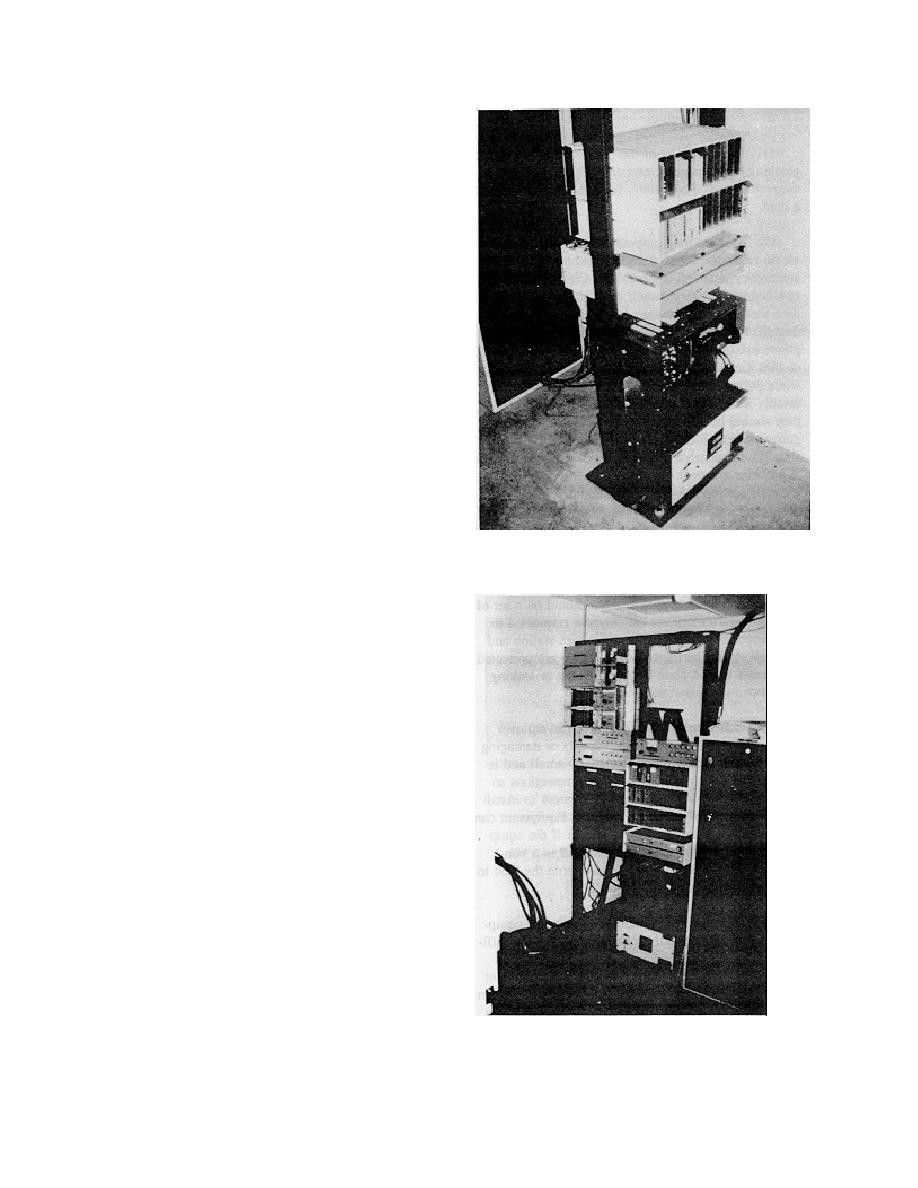
ETL 1110-2-533
30 Sep 94
(5) Adjacent cabinets should be bolted together
to prevent banging and to provide redundancy should
a base anchor be installed incorrectly or fail. This
method must be used with caution for long, multi-bay
lines of equipment. The retrofit of anchorage usually
requires the use of expansion anchors. In general,
long anchor bolts should be used as well as good
installation practices. That is, proper size holes
should be drilled, the holes should be cleaned after
they are drilled, and proper setting torques should be
applied. Ideally, the anchor should extend below the
rebar in the slab. The anchor bolts should be placed
close to the cabinet to reduce prying and increase
stiffness of the anchorage. When housekeeping pads
are used, it is desirable to have the pads extend
beyond the equipment so that bolts through the base
of the cabinet frame (which should be located near
the edge of the cabinet) have adequate edge clearance
to the pad. Ideally, anchor bolts should extend
through the housekeeping pad into the floor slab as
the pad is usually poured after the slab is poured and
the bonding of the pad to the floor is questionable.
Separation of the pad from the floor has not been a
problem in past earthquakes. Lead-type anchor bolts
should be avoided.
Figure B-14. Base anchorage of a typical commu-
nication frame
(6) Typically, communications equipment is
installed in tall frames that have a narrow footprint so
that large overturning moments and prying loads can
be applied to the anchorage (Figure B-14). Even
when provided with a strong anchorage, these frames
tend to be very flexible, so that large amplification
from earthquake-induced motion can be expected. In
a few cases, cable connections have been pulled loose
due to the motion of the equipment frame. Because
of the flexibility of these frames, it is desirable to
have them braced at the top to a structural wall by
means of a brace or a cable tray that has structural
integrity. This will reduce the motion of the frame
and the loads applied to the anchorage. Frequently,
frames of different heights are placed next to each
other so that it is difficult to attach each frame to the
overhead bracing system. Bolting adjacent frames
together simplifies the bracing and adds redundancy
(Figure B-15).
(7) Another problem that has frequently been
observed in communication equipment is that circuit
packs (circuit boards) vibrate loose (Figure B-16).
Typically, card cages do not have doors, and circuit
packs may be held only by the friction of the connec-
tor where they plug into the back plane of the card
Figure B-15. Bolt adjacent racks together
cage. Locking type card pullers are desirable, but
B-10



 Previous Page
Previous Page
